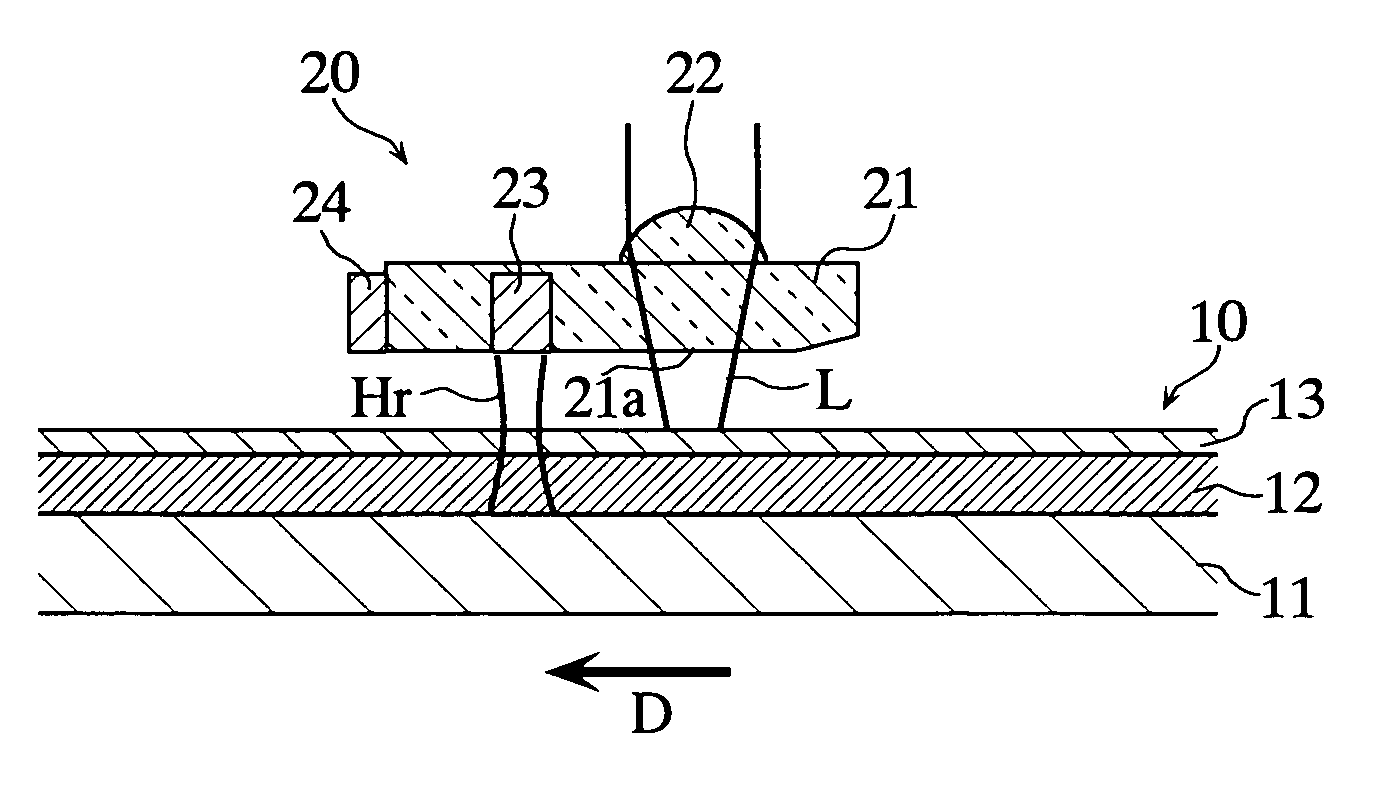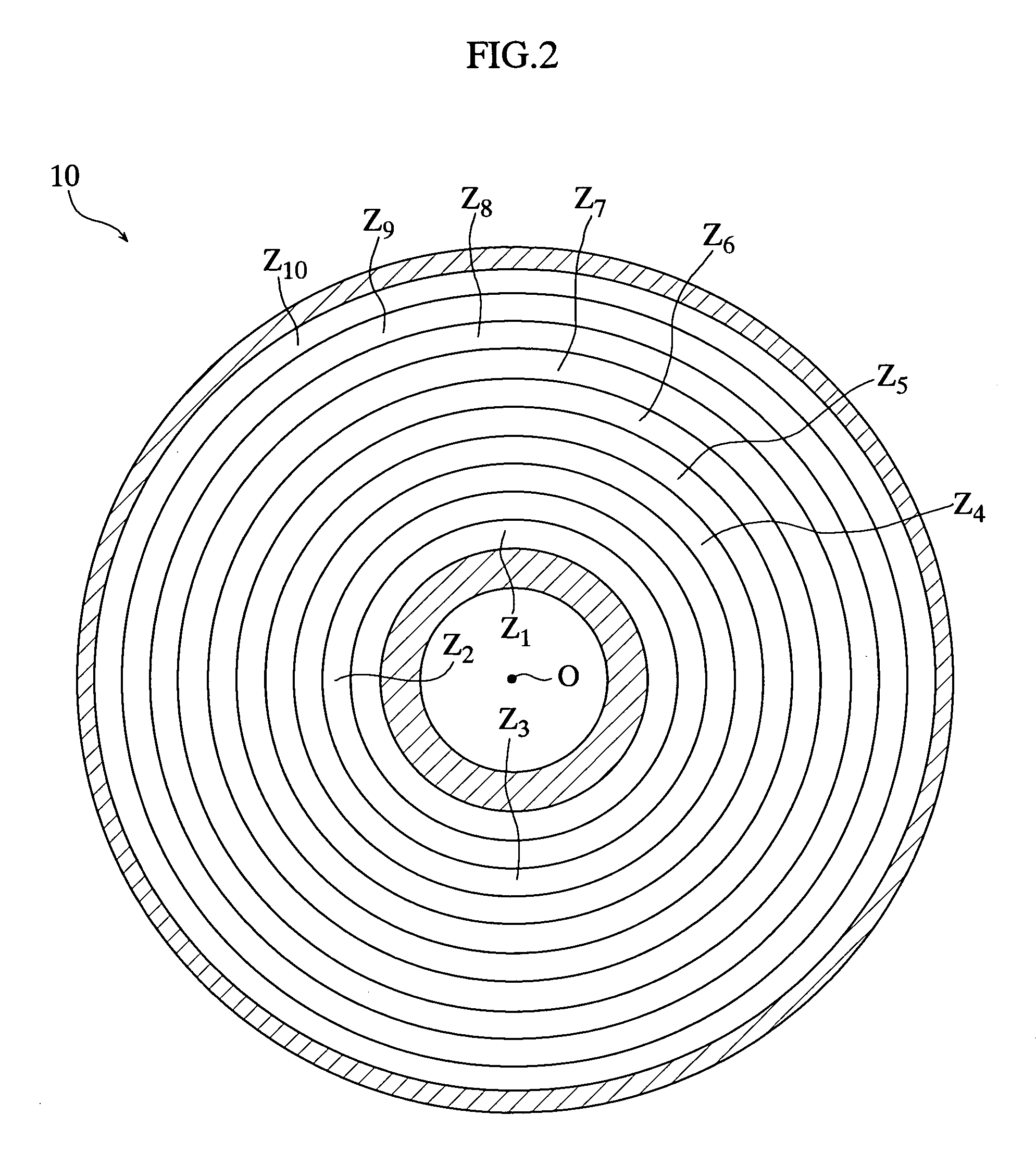Heat-assisted magnetic recording method and test record reproduction method
a technology of magnetic recording and recording method, which is applied in the field of magnetic recording method, can solve the problems of insufficient illumination laser power, insufficient heating of recording magnetic film,
- Summary
- Abstract
- Description
- Claims
- Application Information
AI Technical Summary
Benefits of technology
Problems solved by technology
Method used
Image
Examples
Embodiment Construction
[0031]FIG. 1 shows a magnetic disk 10 and a slider 20 capable of implementing the heat-assisted magnetic recording method and test record reproduction method of the present invention.
[0032] The magnetic disk 10 has a laminated structure comprising a disk substrate 11, a recording magnetic film 12, and a protective layer 13 and is composed as a magnetic recording medium capable of implementing information recording and information reproduction in a heat-assisted recording system. The disk substrate 11 is a component mainly designed to ensure the rigidity of the magnetic disk 10 and is, for example, an aluminum alloy substrate, a glass substrate, or a resin substrate. The recording magnetic film 12 is composed of a perpendicularly magnetized film or in-plane magnetized film and constitutes a recording surface for recording the information in the magnetic disk 10. A plurality of concentric circular tracks are magnetically composed on the recording surface. Such a recording magnetic fi...
PUM
| Property | Measurement | Unit |
|---|---|---|
| recording magnetic field | aaaaa | aaaaa |
| power | aaaaa | aaaaa |
| distance | aaaaa | aaaaa |
Abstract
Description
Claims
Application Information
 Login to View More
Login to View More - R&D
- Intellectual Property
- Life Sciences
- Materials
- Tech Scout
- Unparalleled Data Quality
- Higher Quality Content
- 60% Fewer Hallucinations
Browse by: Latest US Patents, China's latest patents, Technical Efficacy Thesaurus, Application Domain, Technology Topic, Popular Technical Reports.
© 2025 PatSnap. All rights reserved.Legal|Privacy policy|Modern Slavery Act Transparency Statement|Sitemap|About US| Contact US: help@patsnap.com



